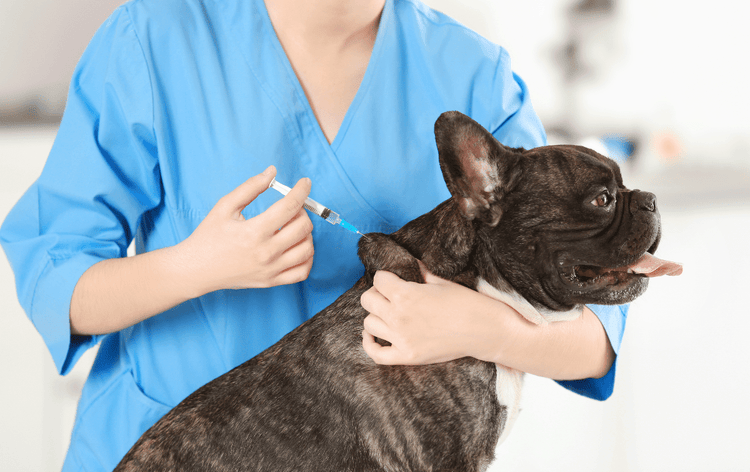
Mannitol for Dogs and Cats
Mannitol, also known as Osmitrol® or Manniject®, is a hexahydric alcohol that is used as an osmotic diuretic for the treatment of head trauma, glaucoma and other causes of swelling or edema in dogs and cats.
When injected intravenously, its molecules distribute throughout the extracellular fluid, drawing fluid from the intracellular space and causing cellular dehydration. Following intravenous administration of the drug, intraocular pressure is reduced, brain size is reduced, and Intracranial pressure is lowered.
Mannitol also reduces blood viscosity and causes reflex cerebral vasoconstriction. It is freely filtered across the glomerulus and reabsorption from the renal tubular fluids is minimal. The presence of mannitol increases osmolarity in renal tubular fluids causing water to be retained, hence the diuresis. Sodium and chloride excretion is increased in this situation.
Mannitol’s onset of action is 30 to 60 minutes and its peak effect occurs about one hour after intravenous administration. The duration of action of a single dose is approximately 6 to 8 hours.
Brand Names for Mannitol
Mannitol is a prescription drug and can only be obtained from a veterinarian or by prescription from a veterinarian. This drug is not approved for use in animals by the Food and Drug Administration but it is prescribed legally by veterinarians as an extra-label drug.
This drug is registered for use in humans and dogs.
- Human formulations: Osmitrol® (Baxter) and various generic forms of mannitol.
- Veterinary formulations: Am-Vet Mannitol Injection 20%® (Neogen), Manniject® (Vetus), Mannitol® (Butler), Mannitol for Injection® (Vedco).
Mannitol is available in for Injection in 5%, 10% 15%, 18%, 20%, and 25% solutions. It is also supplied in 50 and 100 milliliter vials; 250 milliliter, 500 milliliter, and 1000 mililliter bottles.
Uses of Mannitol for Dogs and Cats
Mannitol may be used as follows:
- To promote diuresis in oliguric renal failure
- To reduce intraocular pressure prior to intraocular surgery and in acute glaucoma
- To reduce intracranial pressure
- To increase the renal excretion of toxins
- To protect the renal tubules from damage by toxic substances.
- To reduce edema and ascites
- To reduce muscle swelling (e.g. compartmental syndrome)
- As a urological irrigating fluid
Mannitol for Pets: Precautions and Side Effects
While generally safe and effective when prescribed by a veterinarian, mannitol can cause side effects in some animals.
It is important that animals given mannitol are actually producing urine. Urine flow normally increases within 15 minutes of beginning the intravenous infusion. If this does not occur, therapy may be discontinued.
Mannitol should not be used in patients with anuric renal failure or urinary tract obstruction. It should also be avoided in pregnant dogs and cats, pets who are severely hydrated, or pets who have suspected intracranial hemorrhage, pulmonary edema, pulmonary congestion, or congestive cardiac failure.
Blood chemistry tests (to determine electrolyte status) should be monitored before and after IV infusion of mannitol.
Mannitol may interact with other medications. Consult with your veterinarian to determine if other drugs your pet is receiving could interact with mannitol.
Dosing Information of Mannitol for Dogs and Cats
Your veterinarian will determine your dog or cat’s Mannitol dosage. In dogs and cats, the usual dose may vary depending on the reason for prescribing. For example:
- For diuresis in oliguric renal failure is 0.125 to 0.25 gram per pound (0.25 to 0.5 gram/kilogram) intravenously over 15 to 20 minutes. Mannitol is often repeated every 4 to 6 hours as necessary.
- To reduce intracranial pressure, mannitol may be dosed at 0.75 gram per pound (1.5 gram/kilogram) of a 15 to 25% solution given intravenously over 30 to 60 minutes.
- To reduce intraocular pressure, mannitol may be given at 0.5 to 1.5 gram per pound (1 to 3 gram/kilogram) of a 15 to 20% solution intravenously over 30 minutes. This may be repeated every 12 hours for 2 days, if indicated.
Medication should never be administered without first consulting your veterinarian. The duration of administration depends on the condition being treated, response to the medication and the development of any adverse effects.